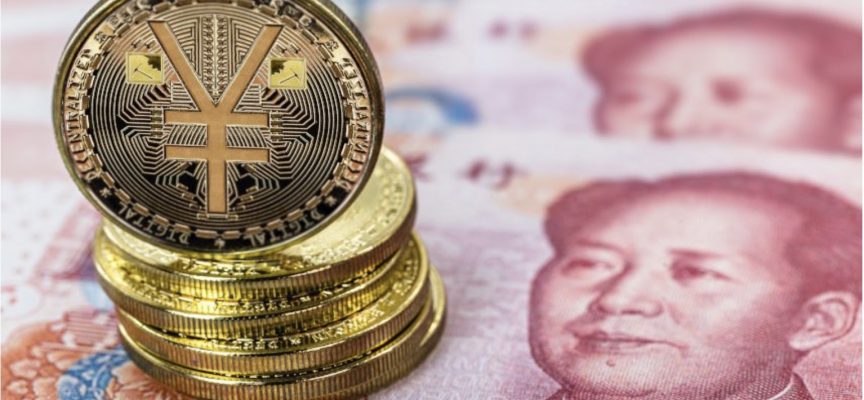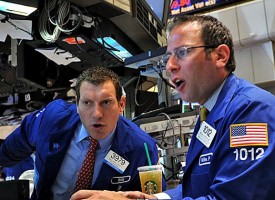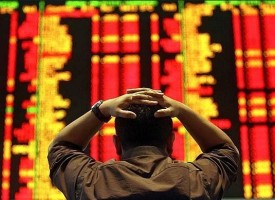Gold investors will make fortunes as the Metal of Kings backs the new monetary system.
The Old Monetary System
September 12 (King World News) – Dr. Stephen Leeb: The old monetary order, in which the dollar is king, will be fading into the past. I’ve focused in previous interviews on why and how it will yield to a world in which gold takes on a more prominent role in underpinning trade. Here, along with some further thoughts on the new monetary system, I also want to look at another facet of our changing world: the rising role of digital currencies and cryptocurrencies.
From one perspective, it’s a relief that the new monetary system is getting closer. That’s because the current dollar-based system is inadequate to cope with the rationing of diminishing resources. For the good of the future of civilization, the system needs to be replaced by a broader more inclusive monetary system in which gold controls the amount of money available for international and in some cases intra-country commerce.
The New Monetary System
The new monetary system will likely be welcomed in the East and the developing world. But it will leave the U.S.-led West with some serious questions. I think some of these can be addressed through letting some form of cryptocurrency trade alongside a new international reserve currency. But don’t assume that means Bitcoin, which, as I explain below, would be a disastrous choice.
First, though, a quick look at progress towards a new reserve currency. China, as we’ve discussed, has taken the lead. For the past seven years it has been researching and testing a central bank digital currency (CBDC). This will be officially introduced in early 2022 and immediately be on an equal footing with the paper yuan. Given that most Chinese citizens already buy almost everything via digital payments, it shouldn’t be long before paper money in China – the country that in the 11th century was the first to introduce paper currency – disappears. As with the paper yuan, within China the CBDC will de facto be backed by gold. China’s gold market is the world’s largest for physical gold, and citizens can exchange the yuan for gold…
ALERT:
Billionaire and mining legend Ross Beaty, Chairman of Pan American Silver, just spoke about what he expects to see in the gold and silver markets and also shared one of his top stock picks in the mining sector CLICK HERE OR ON THE IMAGE BELOW TO HEAR BEATY’S INTERVIEW.

China plans to use the CBDC for international transactions as well; however, unlike trading within China, the international version of the CBDC would likely use a highly sophisticated blockchain to record and settle transactions as they travel through supply chains. One advantage to the new system is that it would be much simpler than the current Western-based system known as SWIFT, an acronym for the Society for Worldwide Interbank Financial Telecommunication. SWIFT’s role is basically to inform banks representing trading parties about the status of their trades (for example, where the trade sits on a particular supply chain). SWIFT is not involved in the clearing or settlement of trades. Under the SWIFT system, exporting companies often have to borrow huge amounts of money until the trade is completed and the importer makes payment. The borrowing is done in dollars and by some estimates amounts to $16 trillion a year. A huge chunk of this borrowing will be eliminated by use of the CBDC. SWIFT, by supplying information about trades, also is what enables the U.S. to enforce sanctions on other countries, another reason many countries will welcome its demise.
Backed By Gold
Similar to its testing period within China, the CBDC will face a testing period in the international arena. As I’ve discussed previously, China’s aim isn’t to base the new international reserve currency on the yuan (or on any single sovereign currency). Rather it will be based on a basket of currencies (similar in form to the IMF’s SDRs) that is backed by gold. I discuss this in detail in my latest book, China’s Rise and the New Age of Gold.
The international version of the CBDC will likely need its own acronym. Let’s hope someone comes up with a less clunky one, but for now I am dubbing it MCGBDC for multi-country gold-backed digital currency.
There are good reasons to think the MCGBDC will easily gain acceptance. For one thing, China is the world’s leading trader. In 2019 the Economist said it was the leading merchandise trading partner for 64 countries vs. 38 for the U.S., a margin that likely has only increased since then. China’s trading heft along with the inherent advantages of the MCGBDC outlined above will likely make the MCGBDC attractive not only to Eastern and developing countries but even to some Western countries as well.
However, it will definitely lead to problems for the U.S. as it’s forced to give up the power it gets from the dollar’s current role. And there are other issues that will emerge as well, arising from the fact that whether we become part of the new worldwide monetary system or stay on the sidelines, a digital dollar seems inevitable. With a digital dollar, our central bank – the Federal Reserve – will gain as much information on us as China’s PBOC has on that country’s citizens.
Increasing Use Of Cryptocurrency
That bumps up against something central to America’s ethos: the notion of individual liberty and freedom from too much government oversight of our personal business. The likeliest response could be increasing use of a cryptocurrency, which is not the same thing as a digital currency…
New interview from legend Doug Casey discussing gold, silver and
global chaos! To listen click here or on the image below.

The crypto industry has grown largely as a way to protect our liberty in the face of massive information gathering by the government as well as by the huge technology companies. What distinguishes crypto from a digital currency is that crypto operates via a blockchain, which allows peer-to-peer transactions and has distributed rather than centralized record-keeping. There is no third party involved in each and every transaction. A digital currency, just like paper fiat currency, is issued by a central party – the government or a central bank- which gains access to how it is used and by whom. It can be viewed as the ultimate tool for gathering information on individuals.
I believe crypto can assuage the fear of freedoms lost when someone knows everything there is to know about you and is free to interpret your actions from a perspective alien to yours. As a protection of liberty and basic freedoms, cryptocurrencies will play a crucial role in a digital world and especially in the U.S., whose foundational ethos is defined by liberty.
But not all cryptocurrencies are created equal. I will compare just two here: Bitcoin and Ethereum. Bitcoin is the clear loser because of its enormous energy consumption. Currently Bitcoin mining consumes 10 times more energy than Ethereum. And with Ethereum aiming to reduce its energy consumption by 99% in the near future, that 10:1 ratio will become 1000:1.
True Existential Crisis For Humanity
Remember, one of the most important arguments in favor of a new monetary system is to allocate increasingly scarce resources. Failure to do so would lead to a true existential crisis for all humanity, leaving us without having put into place the renewable energy infrastructure needed on a global scale. Beyond any arguments about climate change, it’s essential that we transition to a world powered largely by renewable energies before commodity scarcities become insurmountable. To do so, resources have to be carefully managed. Bitcoin flies in the face of that urgent need.
True, it’s estimated that Bitcoin mining currently is just a very small part, around 1%, of world energy use. But some energy sources are much more valuable than others. Bitcoin mining relies exclusively on electricity, which is by far the major cost in the Bitcoin ecosystem. Bitcoin miners are therefore motivated to use the cheapest electricity they can find. That means the bulk of the electricity that Bitcoin uses comes from electricity produced by renewables or hydropower.
Given that electricity accounts for about 15% of energy use and that cheap electricity – renewables and hydro – amounts to less than a quarter of electricity use, Bitcoin is consuming about 3% of that portion of energy that should be dedicated to producing renewable energies. Using cheap sources of energy on anything other than producing renewable energies raises the cost of producing renewable energies. Bitcoin significantly lowers the chances of reaching the goal of 100% renewable energies. That’s why Bitcoin, unlike Ethereum, is an existential threat.
One other advantage to Ethereum is that it also includes peer-to-peer means of exchanging many other items, from contracts to proprietary computer programs, offering additional protection against inroads to individual privacy.
Gold-Linked Monetary System
I have no doubt that moving to a gold-linked monetary reserve system is critical to our civilization, and that investors in gold will make fortunes. But to further ensure that we have a flourishing civilization in which to enjoy that wealth – a world with sufficient energy and with individual freedoms assured – the right cryptocurrency also is essential.
***To listen to the timely and powerful audio interview with Matthew Piepenburg about the gold and silver markets and what surprises to expect in the rest of 2021 CLICK HERE OR ON THE IMAGE BELOW.
***ALSO JUST RELEASED: It’s An Eerie Calm Before The Storm As People Around The World Endure One Negative Thing After Another CLICK HERE.
***ALSO JUST RELEASED: 1970s…Again, Now That’s Some Inflation! Plus We May Have Already Seen The Daily Low For Gold CLICK HERE.
2021 by King World News®. All Rights Reserved. This material may not be published, broadcast, rewritten, or redistributed. However, linking directly to the articles is permitted and encouraged.








